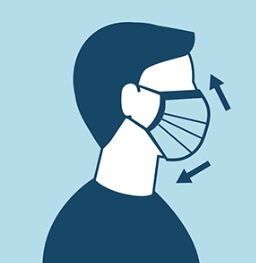For the deaf, face masks block more than disease
Medical Pharmaceutical Translations • May 28, 2020 12:00:00 AM

Face masks are considered an easy way to reduce the spread of COVID-19, by blocking at least some particles that might come from a person’s nose and mouth.
But they’re also changing the way deaf and hard-of-hearing people communicate. Many members of the deaf community rely on lip reading; since masks block wearers’ mouths, they’re now effectively cut off from a form of communication.
There are some alternatives available to those who need or want to be understood by deaf or hard-of-hearing people. One is opting for a plastic face shield. Another is using a mask that allows for the lips to be visible.
Several companies and individuals have designed cloth masks with plastic windows over the lips. You can even find a tutorial for sewing your own here.
But these masks may not be as safe as standard cloth masks, since there could be small openings where the plastic and cloth connect. Additionally, some people may find it hard to breathe with plastic covering the area by their mouth and nose.
Hopefully, we’ll be able to find a solution that works for everyone and keeps everyone as safe as possible. For now, if you’re wearing a mask, Carolyn Stern, of the Center for Hearing and Communication, recommends using talk-to-text apps or even simply writing things down when communicating with a deaf or hard-of-hearing person.
Read on to learn more about the challenges that masks pose to the deaf community, as well as the challenges of creating a mask that would keep a person’s mouth visible while still acting as a barrier.
Contact Our Writer – Alysa Salzberg
